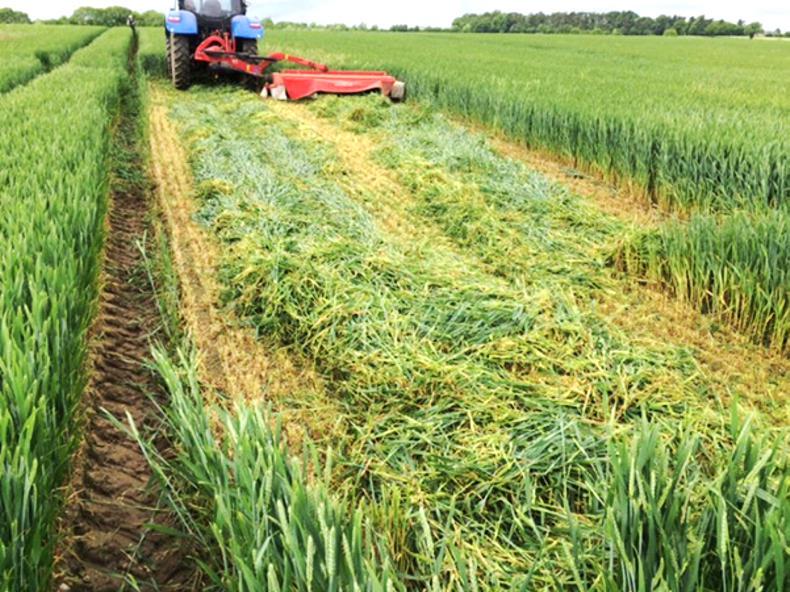Keeping blackgrass out should be important for all tillage farmers. It should be every farmer’s and landowner’s objective to ensure that seeds of this dreaded weed do not get onto or into land to begin with.
This objective has become increasingly challenging as more and more land shows incidence of the weed, thus increasing the risk of transfer between fields and farms. Zero tolerance must be the primary objective and keeping it out is by far the best place to begin.
But if it gets in, it must be tackled ferociously using every husbandry tool that is known to have an impact.
With this in mind, it is worth considering the cost of having blackgrass on your farm or in a field. If you don’t have it, the priority is to keep it out. If you do have it, the priority is to minimise yield loss and prevent seed return for future years.
Many costs
There are many ways in which the presence of blackgrass will add to production cost, but the ultimate has to be the loss of a field to tillage where the weed has developed resistance and become uncontrollable.
Many fields around the country have already gone back into grass in an effort to halt the spread of the weed around the farm. But grass is of little use to tillage-only farmers.
Where blackgrass is present, the first priority must be to contain it and then eradicate it. This will involve a series of measures, from the destruction of an infected patch (silage or glyphosate), delaying sowing to disadvantage the weed, higher seeding rates to provide crop competition, straw chopping to avoid pulling seeds around the farm, stubble cultivation, the use of herbicides to control the weed and the rogueing of any surviving plants.
It may also require a switch from winter to spring crops where germination of the weed is normally much lower (some fields already have spring germinators) and in extreme cases, it may mean putting fields in grass.
Avoid machinery coming onto your farm or have it cleaned thoroughly first
All these actions are additional cost points, but their impact very much depends on the area that is affected when action is taken. For this reason, vigilance is the best defence, because if you catch the first few plants in a field, you prevent the build-up of a problem that could become very costly.
A recent conversation with Jimmy Staples of Teagasc suggested that the combination of the actions needed can quickly add up to €1,000/ha as direct and indirect annual costs.
So, keep the problem out if you don’t have it. Avoid machinery coming onto your farm or have it cleaned thoroughly first. Know the exact source of any organic manures or composts, only use certified seed etc. Prevention is the best and cheapest cure, but it requires vigilance, crop inspection and hand rogueing if necessary.
Actions
If a problem is allowed to become bad before action is taken, crop or patch destruction could be necessary. Running a combine through a bad patch is a sure way to move the problem around the field and the farm. Destruction can mean taking it out as silage or burning it off with glyphosate before seed fill. At this point, all of the annual expenditure will have been made, but leaving it will only make the overall problem worse in the longer term. If only one hectare was lost, this would equate to a cost of over €1,300/ha. If whole fields were infested, this cost would be multiples of that.
Late sowing also brings the risk that the crop might not be planted and force a move to spring cropping
Early planting is a major driver of blackgrass problems. It favours weed seed germination and growth, so delaying sowing disadvantages the weed. While this could also disadvantage the crop, it would be better to do this if only a single field was involved. Late sowing also brings the risk that the crop might not be planted and force a move to spring cropping.
A yield reduction or a switch to a spring crop would directly reduce margin. Jimmy suggested that this cost could be up to €230/ha, based on the margin difference between an 11t/ha winter wheat crop and an 8t/ha spring barley crop. But this will depend on the field and the farmer.
Herbicides
Herbicides become essential where the weed remains sensitive to available chemistry. While very dense infestations are better destroyed, lower density infestations should be sprayed, unless they are known to be resistant.
Jimmy suggested that a combination of different actives and chemistry types is likely to cost close to €150/ha. Spraying may not give 100% control and surviving plants should be rogued.
Stay alert
The overall cost of blackgrass control is directly related to how quickly you move to stop it. So, be alert to the risk and keep the problem out if at all possible. This requires the immediate identification of any grass weed that is not known to you.






 This is a subscriber-only article
This is a subscriber-only article











SHARING OPTIONS: